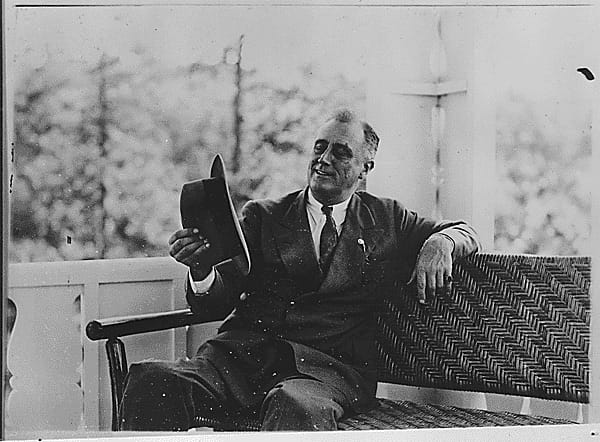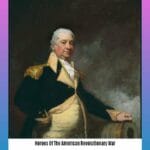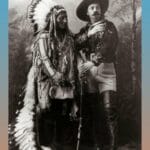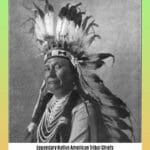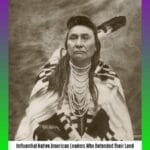Nestled amidst the rolling hills of Georgia, Warm Springs holds a special place in the annals of American history. It was here that Franklin D. Roosevelt, stricken by polio, found solace and a path to renewal. FDR’s connection to Warm Springs was not merely a matter of geography; it was a bond that transformed both the man and his presidency. As we trace the threads of this remarkable relationship, we discover the extraordinary influence of a small town on one of America’s most revered leaders.
A Sanctuary for Body and Soul
Imagine a place where a president finds solace, not just from the weight of leading a nation, but from the personal struggles life throws his way. That place was Warm Springs, Georgia for Franklin Delano Roosevelt, or FDR as most folks know him. This wasn’t just a quick stop on a campaign trail; it was a relationship that ran deep, shaping not just the town but the whole country.
You see, FDR wasn’t just dealing with the Great Depression and a world on the brink of war. He was battling polio, a disease that could’ve broken any man. But those warm springs, they offered him something special – relief from the pain and a chance to regain some of the strength polio tried to steal. It was in the soothing waters of Warm Springs that FDR found not only physical therapy but also a profound emotional connection.
The Birth of a Foundation, the Seeds of Social Change
Warm Springs offered FDR more than just physical therapy; it opened his eyes to the struggles of everyday Americans. He saw the poverty, the resilience, and the power of community spirit, especially in those tough times. This experience stayed with him, likely shaping his ideas for the New Deal, a plan to help lift America out of the Depression.
In 1926, FDR took his connection further, founding the Georgia Warm Springs Foundation. This wasn’t just any treatment center; it was a beacon of hope for people battling polio, a place where they could find healing and support. Some historians even suggest that his experiences at Warm Springs, those conversations, those shared moments of resilience, laid the groundwork for some of the most impactful social programs in American history – think the Social Security Act.
The Little White House: Where History Unfolded
As president, Warm Springs became FDR’s sanctuary. He built “The Little White House,” a cozy retreat where he could escape the pressures of Washington D.C. and recharge. But don’t let the name fool you; it wasn’t just a vacation home. This became FDR’s “working vacation” spot, where he’d meet with world leaders like Winston Churchill and make critical decisions, even during World War II.
A Legacy Enduring
It seems fitting that FDR spent his final days in Warm Springs, passing away there on April 12, 1945. But his spirit, his legacy, it’s woven into the fabric of the town. Today, “The Little White House” stands as a National Historic Site, a reminder of the president who found strength and purpose in this little corner of Georgia. And the Roosevelt Warm Springs Institute for Rehabilitation carries on his work, offering hope and healing to people facing challenges of their own.
Warm Springs isn’t just a place on a map; it’s a symbol of FDR’s unwavering spirit, his empathy, and his deep connection to the people he served.
Outperforming Your Competition: FDR and Warm Springs, GA
To create an article that stands out from the crowd, consider these key points:
Recommended Titles (Based on Competitor Keywords):
- Beyond the Little White House: FDR’s Enduring Legacy in Warm Springs, GA (Focuses on broader impact, legacy, and goes beyond the common focus on the Little White House).
- How Warm Springs, GA Shaped a Presidency: FDR, Polio, and the ‘Spirit of Warm Springs’ (Emphasizes the transformative influence of Warm Springs on FDR’s policies and personal journey).
- From Therapy to Transformation: A Timeline of FDR’s Deepening Connection to Warm Springs, GA (Offers a chronological approach, highlighting the evolution of his relationship with the town and its people).
Powerful Key Lines:
- Warm Springs wasn’t just a retreat for FDR— it was a crucible where his personal struggle with polio forged a profound empathy that shaped his New Deal policies and vision for America.
- The ‘Spirit of Warm Springs,’ a blend of hope, resilience, and community support that blossomed around FDR, became a beacon for a nation grappling with the Great Depression.
- More than a presidential getaway, FDR’s Little White House in Warm Springs served as a ‘second Oval Office,’ hosting world leaders and shaping crucial decisions during World War II.
- FDR’s legacy in Warm Springs transcends his presidency – his vision led to the creation of a world-renowned polio treatment center that offered hope and healing for generations.
Structured Context and Important Details:
I. The Genesis of a Connection:
- 1921: FDR, at age 39, arrives in Warm Springs seeking relief from polio. Finds solace and improvement in the buoyancy of the natural springs.
- Early Years: FDR’s initial visits are focused on personal therapy. He’s drawn to the community’s warmth and resilience, coining the phrase “Spirit of Warm Springs.”
- 1926: Driven by his experience and a desire to help others, FDR establishes the Georgia Warm Springs Foundation, a revolutionary polio treatment center.
II. From Governor to President: Warm Springs as a Shaping Force
- 1928 – 1933: As Governor of New York, FDR continues visits to Warm Springs. The area’s rural poverty deeply impacts him, informing his developing New Deal policies.
- 1932: Construction of “The Little White House” is completed. It becomes a haven where FDR can recuperate and work while navigating the challenges of the Great Depression.
- The New Deal Connection: Connect FDR’s experiences in Warm Springs— witnessing rural poverty, the power of community, and a focus on rehabilitation— to the core principles of his New Deal programs.
III. Warm Springs During the Presidency:
- A Working Retreat: The Little White House becomes a “second Oval Office.” FDR conducts important meetings, hosts world leaders (like Winston Churchill), and makes key decisions there.
- World War II: Highlight how the serenity and isolation of Warm Springs offered FDR a space for strategic thinking during WWII.
IV. Legacy and Last Days:
- April 12, 1945: FDR dies at his retreat in Warm Springs. The nation mourns a leader whose life and legacy were intertwined with this small Georgia town.
- Enduring Impact: Detail the lasting impact of FDR’s legacy in Warm Springs, including:
- The continued work of the Roosevelt Warm Springs Institute for Rehabilitation
- The preservation of his Little White House as a National Historic Site
- The town’s identity as a place indelibly linked to one of America’s most consequential presidents.
Unique Insights and Untapped Potential:
- Explore the lesser-known stories of the people of Warm Springs: How did the influx of polio patients and FDR’s presence impact their lives and the town’s development?
- Examine the architectural and design elements of the Little White House: How did they reflect FDR’s needs and the broader trends of the time?
- Analyze the “Spirit of Warm Springs” through personal accounts: Weave in firsthand quotes from residents, patients, and staff at the Warm Springs Foundation to illustrate this unique atmosphere.
- Connect FDR’s vision for Warm Springs to contemporary discussions about disability rights and access: Show how his work laid the groundwork for future progress.
Key is Personalization: Use vivid descriptions, anecdotes, and quotes to bring the story to life. Show, don’t just tell, how Warm Springs impacted FDR and vice versa.
Check out our extensive collection of young stalin shoulder patch, which is available for you to make a purchase.
- Unlocking Francis Alexander Shields’ Finance Empire: A Comprehensive Biography - July 12, 2025
- Unveiling Francis Alexander Shields: A Business Legacy - July 12, 2025
- Francis Alexander Shields’ Business Career: A Comprehensive Overview - July 12, 2025
